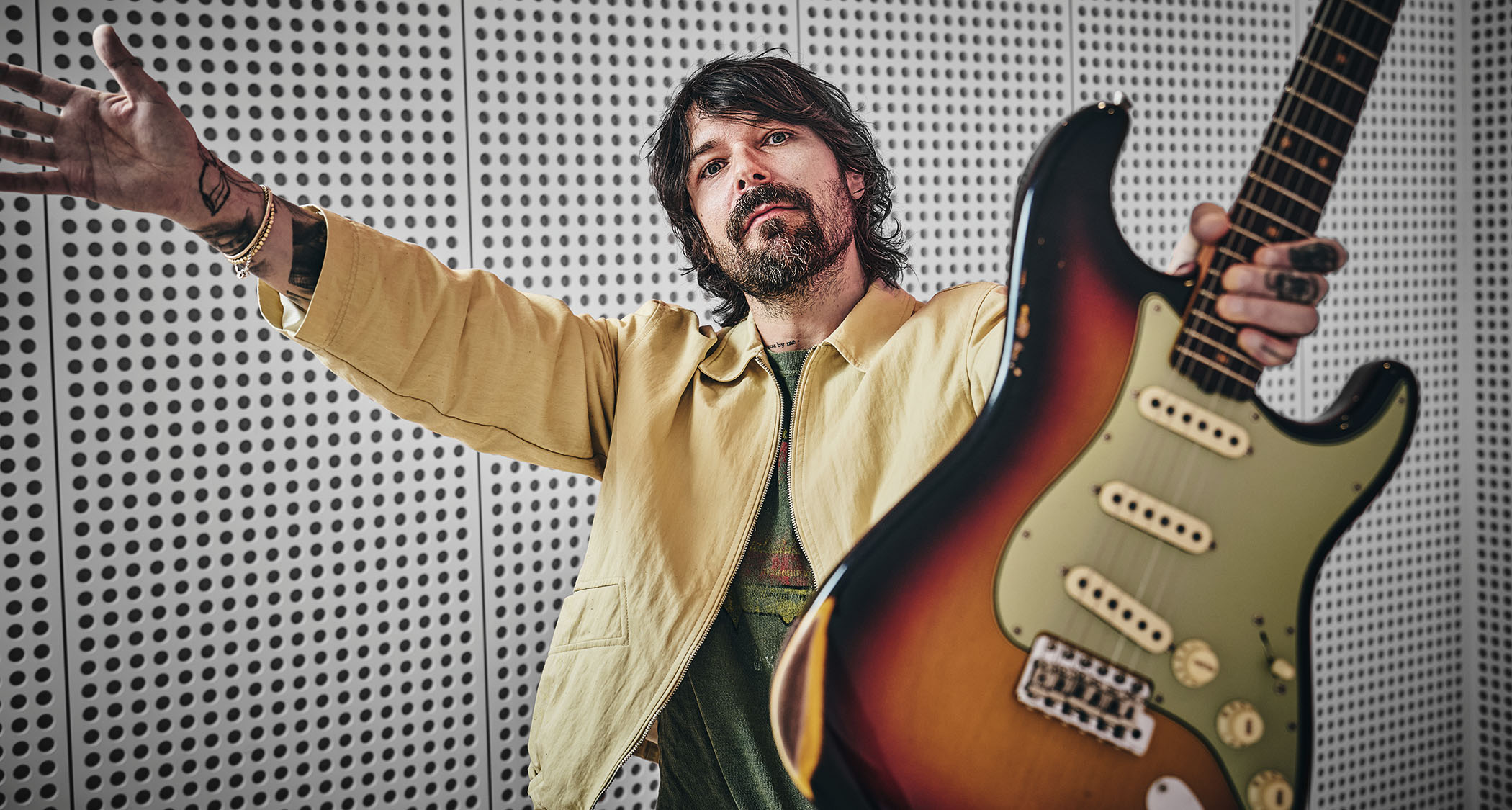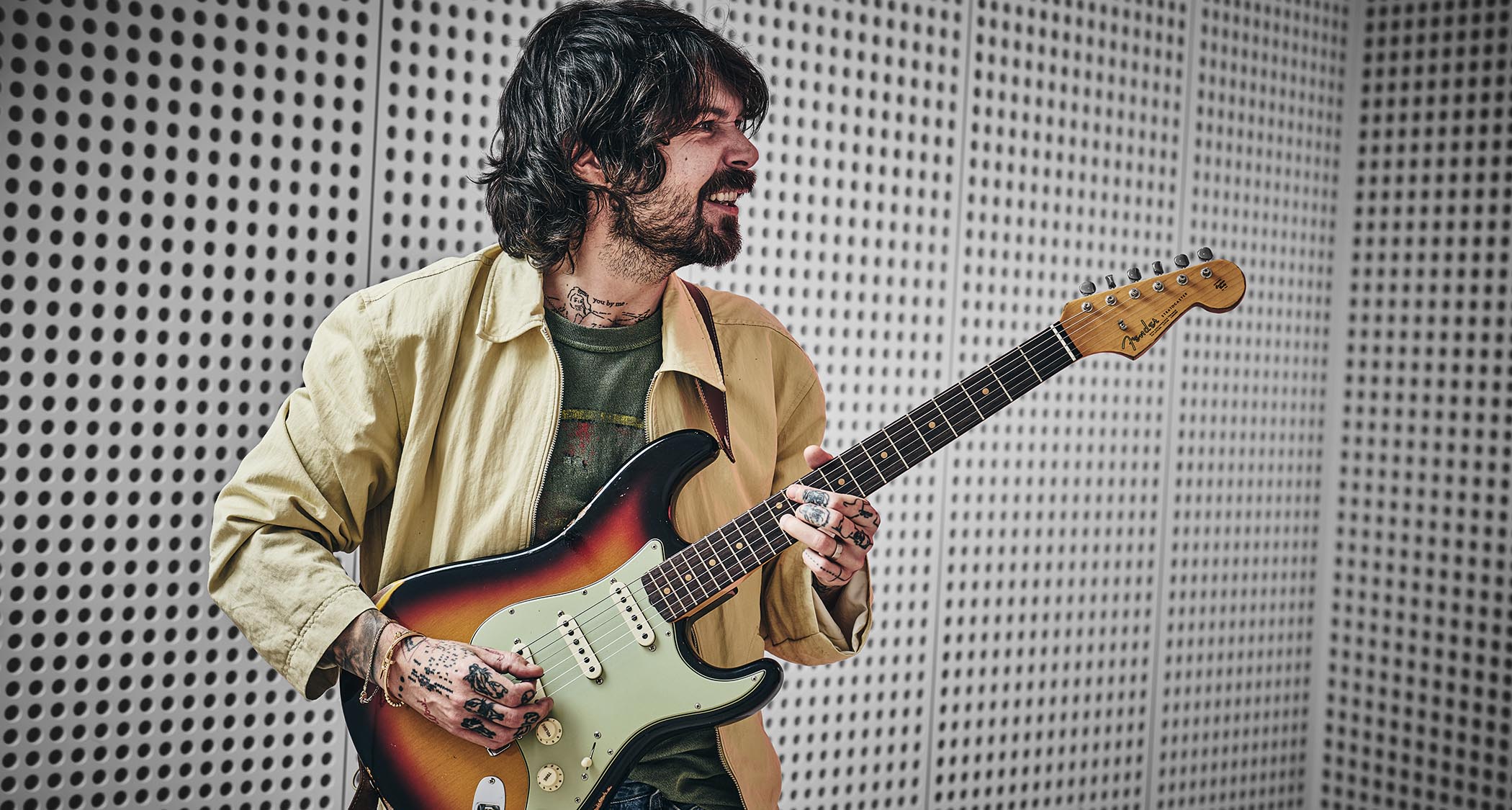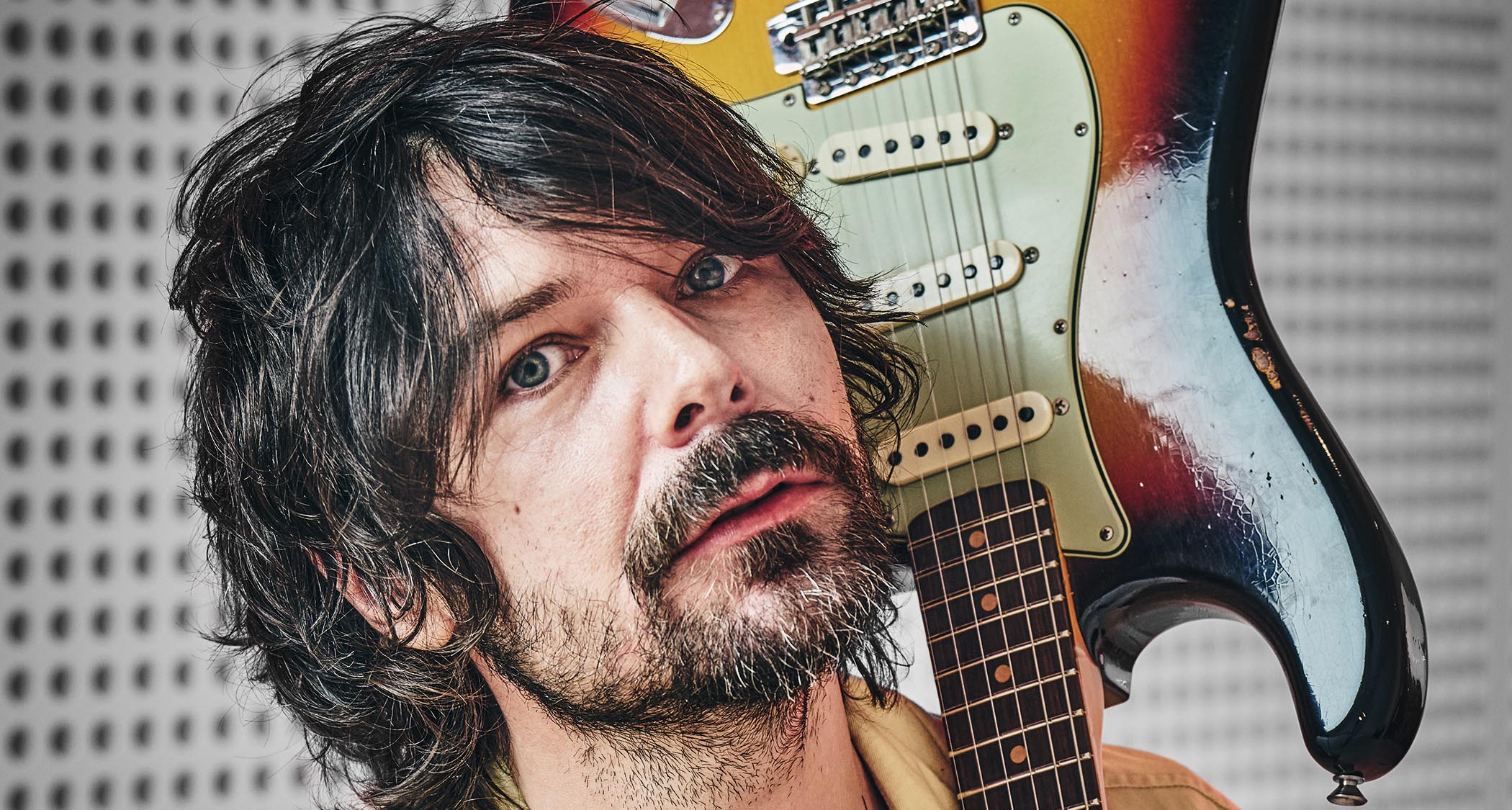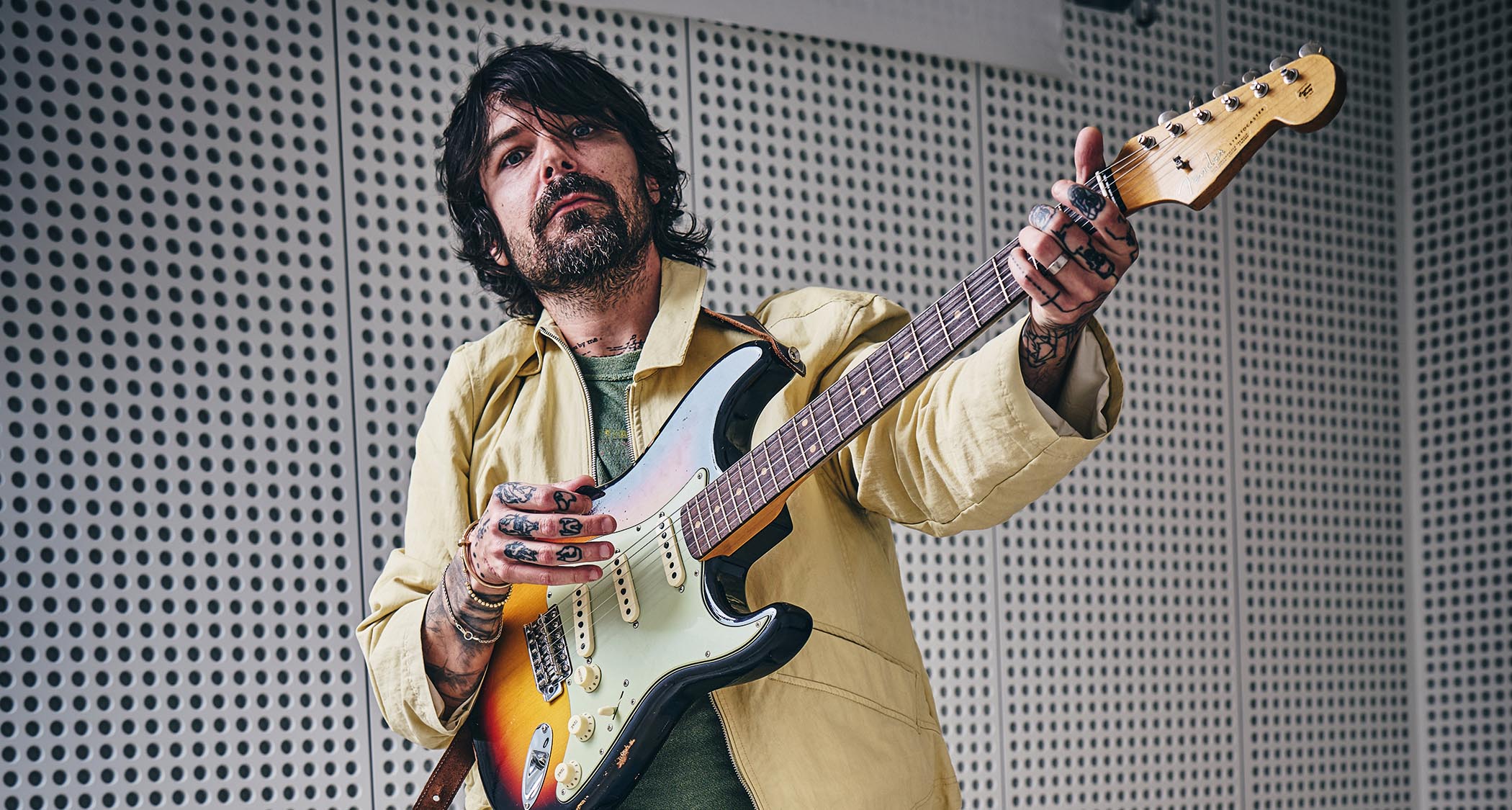“I’m nervous of that guitar because it’s so expensive. I can barely look at it”: Biffy Clyro’s Simon Neil on how you can shake the Earth with one finger, and why he fell in love with Kirk Hammett’s Greeny – even if he’s still Team Strat
With their 10th album, Futique, Biffy Clyro remind us exactly why they are one of the most important rock bands of the modern age

In their three decades of playing together, Kilmarnock trio Biffy Clyro have become one of the most cutting-edge and far-reaching rock acts of their generation, blessed with an ability to write stadium-conquering anthems that thrill and mesmerise in equal measure.
Their Strat-wielding frontman, Simon Neil, is someone who understands the power of the riff, as well as the importance of the musical information above it – with a proven track record for striking a perfect balance between intensity and melody.
On this year’s 10th full-length album, Futique, the group still finds new ways to stretch that formula and experiment with the equation, dazzling and surprising us without ever running the risk of losing their identity.
Early singles such as A Little Love, Hunting Season and True Believer have a familiarity that would convince any listener that these tracks have existed for years and years. In fact, the same could be said for the album as a whole.
Working with producer Jonathan Gilmore for the very first time also allowed Simon to spread his wings and innovate, moving away from the classic trio format to embrace more layers and orchestration.
When you’re building music, the singer/guitarist explains, there’s a point where it can all “start to shrink”, so it’s best to handle grand designs and high ambitions with great care…
Simon, you’ve always been a Strat man. What is it about the original double-cutaway that does it for you?
All the latest guitar news, interviews, lessons, reviews, deals and more, direct to your inbox!
The Strat is everything to me. My favourite model is the Michael Landau signature. I stumbled across one about 10 years ago and it just spoke to me. That’s the guitar I usually play in the studio, a reissue of his 1968 original. I actually ended up buying two of them. Those Strats are absolutely gorgeous and very much the foundation of everything we do, every time we record.
The Strat is everything to me. My favourite model is the Michael Landau signature... That’s the guitar I usually play in the studio
That said, you’re happy to experiment in the studio…
I flirted a bit with a small and boutique UK company called Fairlane Guitars. I’ve used their Zephyr model, and I’ve also used a guitar made by Novo in Nashville. My tour manager bought one and I pinched it off him for this record. Believe it or not, one of my main guitars for this record was this wee Fender Champ…
The one with the built-in speaker?
Yeah! It was released in Japan back in the ’90s. A tech had one, which played and felt so real and right, plus the sound that comes out of that speaker is just dynamite. You can get this really sludgy tone.
Obviously it’s quiet, but we mic’d it up for a few songs to get some cheap-sounding warmth. I’ve definitely embraced a few other guitars, but the Strat is my defining sound. It always speaks through whatever’s in the mix, no matter how thick it might be.
You’re no ultra hoarder like Slash or Bonamassa, but you must have some nice guitars knocking around.
I wish I had the money to collect like they do [laughs]. But I did treat myself to a nice guitar not long ago. It was one of the Custom Shop [Kirk Hammett] ‘Greeny’ [1959 Les Paul Standard] reissues, which I picked up in Nashville. I hummed and hawed because it was a lot of money.
I’m a Fender Strat man through and through, but I’m also a big Metallica fan. I’ve seen Kirk playing it over the years and know what a big deal that guitar is. I do like the sound of Les Pauls and find them extremely useful in the studio, but the act of putting one on feels wrong for me. It’s like I’m wearing someone else’s clothes.
I have a ’77 Les Paul, which got used on a couple of records. I also have a ’63 SG that I bought from Norm’s Rare Guitars. I tried to play it live a few times, but it struggles to hold tuning. That’s my pride and joy – a work of art that makes me sound like Angus Young. I use it to write, and the same goes for my White Falcon.

Did you use the ‘Greeny’ on the record?
It popped up on a couple of tunes: A Thousand And One, It’s Chemical! and Woe Is Me, Wow Is You. But I’m nervous of that guitar because it’s so expensive. I can barely look at it. I don’t know if I’ve overstepped my limit. But I love that middle pickup position where it goes out of phase. It’s so fucked up and cool, it’s almost Strat-y.
What were your go-to effects and amps in the studio?
The main amps were a Fender Twin Reverb and a big Marshall JCM800. We also used a Sears amp, this old cheap bugger that sounded dynamite when you turned it up, loads of character, though it was a little hit-and-miss in terms of how it reacted to pedals.
I also used some Audio Kitchen stuff, like this amp they make called the Little Chopper and a pedal called The Big Trees preamp. We did more DI and post-effects stuff this time, which I haven’t done a lot of in the past. I like to hear the air moving, but because we were working with a new producer, this album ended up with more of a modern approach.

What exactly were the benefits of doing that, then?
Normally, I’m too scared to DI anything, but it actually does bring a different quality. I used a few Chase Bliss pedals for textures in the background. This was the first time I wanted to make sure that what we recorded wasn’t necessarily the sound of what was on the floor. In the past, it’s been important to mainly capture us three playing together. This time I wanted everything shifting right there at the front.
On other albums, we’ve done everything so minimally, often using one microphone and one amp making one tone for an entire song. This time, I wanted layers. I didn’t want to sound too organic. It’s Chemical! ended up sounding really chorus-effected, but it’s actually more like 100 tracks of guitar doing different things.
I’ve gone from using the smallest amount of gear to make the biggest sound, to using as much as possible with the same end goal. And, actually, sometimes you can over-record guitars and the mix starts to shrink.
That’s interesting. You can end up becoming a victim of your own ambition?
I still have my Marshall and Fender, plus my Boss Metal Zone and delays. They are on everything
Without Jonathan’s expertise, that’s where I’ve often ended up, at demo stage. I think I can add things and grow the song, but at a certain point it stops growing and starts to shrink. Jonathan kept us on that precipice of making it sound big enough without being swallowed by its own thickness.
And even on the albums that don’t always sound like a three-piece, it’s important for the songs to work stripped-back. We still prepare the same way. I still have my Marshall and Fender, plus my Boss Metal Zone and delays. They are on everything. That’s how we check that the songs are going to work – if they can exist with a basic setup, it doesn’t matter how we record it, we know it’ll translate.

A Little Love is all about big chords and even bigger hooks. What do you remember about writing it?
As soon as I went from minor to major, that’s when I knew the song was complete. It’s in DADGAD, which is one of my favourite open tunings because it can make chords sing. With just one or two fingers, you can have such a big impact, given how the voicings can change and reflect this deep sense of emotion.
There’s something really liberating about big open sounds like that, making the earth fucking shake with just one finger. DADGAD is a lot easier than some of the open C tunings I’ve used, which guitars usually don’t like because strings go from loose to tight. It can become a nightmare!

You and your tech, Richard Pratt from Gone Fishing Effects, unveiled the first batch of Booooom Blast overdrive/fuzz pedals back in 2020. Are there any plans to do more?
Yeah. That got used as well. To everyone reading this, it’s an absolute killer, so make sure you get it on your records, too [laughs]. We’re still making them. It’s a fine line, though. We thought about doing a wider release, but I like doing smaller batches.
Richard personally builds every pedal. If something – God forbid – goes wrong, people know they can send it back, get it fixed and returned. I feel like when things go to wider manufacturing, maybe the quality level dips a little. This is all made to order in someone’s shed.
It’s interesting how higher-gain pedals can work wonders on lower settings. Eric Clapton and David Gilmour were once using the Boss HM-2, which is mainly associated with extreme Scandinavian metal…
Isn’t that bonkers? It’s the sound of bands like At The Gates and Entombed, yet Clapton was plugging into one
Isn’t that bonkers? It’s the sound of bands like At The Gates and Entombed, yet Clapton was plugging into one. We all use gear in different ways, sometimes for things beyond what it may have been designed for.
I used to think you needed someone’s rig to sound like them, but actually it’s all about the expression through your fingers. I’m still enthralled by the magic of the guitar, probably because I never conquered the technique side.
It’s this box of wonder that I approach as a creative instrument. A lot of songs on this record are in standard tuning, though a couple were standard a step down. I know I’m about to go down a creative period where I start fucking with tunings. I needed a wee break from the guitar before this album.
Why’s that?
We’d released two records during the pandemic and my guitar was my companion through that [so] I couldn’t look at my guitar for a year after that; I was scared of it. I felt this responsibility, where I had to write music every time I picked it up.
I’d like to think I’m getting better as a player, though sometimes I think I’m only getting better as a songwriter
So instead I went away and made some heavy metal music in Empire State Bastard [with Mike Vennart]. As soon as I came home, I picked up the guitar and the songs started to come out. It was playtime again.
Being a novice when you are creating is actually a good place to be. You can have too much knowledge. Again, it’s that battle I’m having between being a better player and not ruining the creative relationship I have with my guitar.
So how do you go about evolving as a player?
I’d like to think I’m getting better as a player, though sometimes I think I’m only getting better as a songwriter. I guess they go hand in hand. Whenever I start to advance my chops as a guitarist, I end up stumbling upon a new idea and writing a new song instead of doing my exercises. But I’m at a stage where I really want to become a better guitarist.
What would you like to work on in the future – would it be anything like jazz comping, blues noodling or classical flamenco?
Definitely nylon! I’d love to become a proper fingerpicker. I’ve learned a few folk techniques over the years, but I’ve come to realise I haven’t progressed. I’d probably need to stop writing songs for a little while. As a person in my 40s, I really should be further along, you know? I feel like I missed a few years of learning other people’s tunes. Even for our very first show, we played nine songs and seven of them were our own.
Which guitarists do you look up to, then?
It’s a cliché, but I heard about Django Reinhardt and his missing fingers early on. I tried to learn a couple of his tunes when I was around 13 and didn’t realise how much it opened up a part of my brain.
What Django did for guitar was incredible. I love the pieces he wrote, despite the hindrances. He was a bit like Tony Iommi in that regard; he overcame his injuries and basically invented a whole genre of music. They both created something essential.
- Futique is out now via Warner.
- This article first appeared in Guitarist. Subscribe and save.
Amit has been writing for titles like Total Guitar, MusicRadar and Guitar World for over a decade and counts Richie Kotzen, Guthrie Govan and Jeff Beck among his primary influences as a guitar player. He's worked for magazines like Kerrang!, Metal Hammer, Classic Rock, Prog, Record Collector, Planet Rock, Rhythm and Bass Player, as well as newspapers like Metro and The Independent, interviewing everyone from Ozzy Osbourne and Lemmy to Slash and Jimmy Page, and once even traded solos with a member of Slayer on a track released internationally. As a session guitarist, he's played alongside members of Judas Priest and Uriah Heep in London ensemble Metalworks, as well as handled lead guitars for legends like Glen Matlock (Sex Pistols, The Faces) and Stu Hamm (Steve Vai, Joe Satriani, G3).
You must confirm your public display name before commenting
Please logout and then login again, you will then be prompted to enter your display name.







